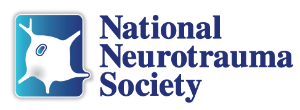Main Menu
Description & Objectives PL06
PL06: A PRIMER ON IMAGING: FROM ANIMAL MODELS TO
HUMAN SUBJECTS






Chair: Zhifeng Kou, PhD
PL06.01 - Susceptibility Weighted Imaging and Mapping in Traumatic Brain Injury
E. Mark Haacke, PhD - Wayne State University
PL06.02 - Advanced Diffusion Imaging in Brain Tauma and Spinal Cord Injury
Victor Song, PhD - Washington University
PL06.03 - The State of Molecular Imaging Epigenetics and its Potential in Neurotrauma
Juri Gelovani, MD, PhD - Wayne State University
Session Description
Advanced imaging techniques demonstrated unprecedented potential to improve the diagnosis neurotrauma and characterize its injury pathology. This session aims to educate the layman audience about cutting edge neuroimaging in TBI and spinal cord injury (SCI) research. Though the targeted audience are those with little or very limited imaging experience, the techniques to be discussed are highly innovative, cutting-edge, and translational. The imaging techniques include state of the art quantitative susceptibility mapping (QSM) and susceptibility weighted imaging (SWI), next generation diffusion imaging, perfusion imaging, functional magnetic resonance imaging (fMRI), and magnetoencephalography (MEG). The talks will address from study design, data acquisition, image processing to data interpretation. It will cover both animal models and human studies in both TBI and SCI.
Learning Objectives
At the conclusion of this session, attendees will be able to:
- Understand the contrast mechanisms, pros and cons of available MRI and MEG techniques in quantifying TBI and spinal cord injury pathology
- Choose right imaging techniques in TBI and SCI studies
- Understand the major principles for a proper experimental design using advanced imaging
- Understand the major principles of image processing
- Properly interpret the imaging data in correlate with histological, behavioral or neurocognitive measures.
